Barbs are schooling fish, which means that they must be kept in the aquarium in groups. Usually, 6-10 individuals are housed together. If a fish lives in an aquarium alone, this greatly affects its mental health: it experiences constant stress and often begins to attack its neighbors in the aquarium.
Aquarium for barbs
Why do aquarists around the world love barbs? Firstly, for unpretentious maintenance, because the fish are hardy and easily adapt to live in various water parameters. Secondly, for the constant fussiness. These fish are always in motion, individuals in flocks are constantly playing or sorting out relationships. Finally, the ease of breeding. You can easily practice breeding spawning fish on these fidgets.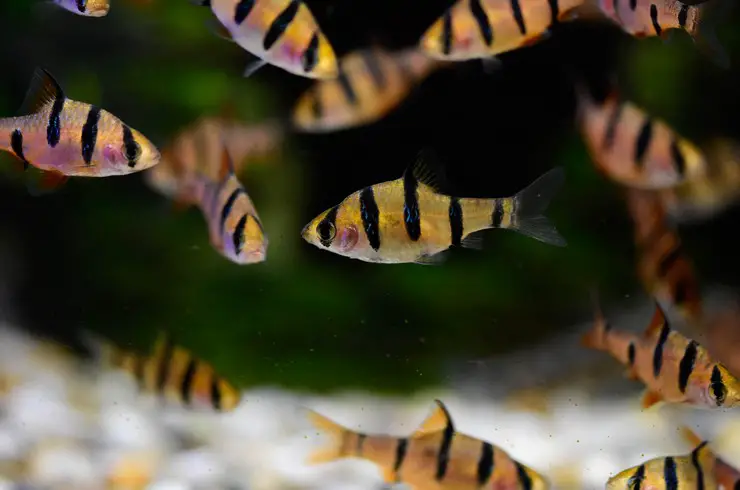
Among barbs, there are both small representatives, no more than 4 cm in size, and giants that can grow more than 30 cm. Therefore, when choosing an aquarium, you must focus on the size of adults, because the comfortable life of barbs will directly depend on this. Most species of barbs will need an aquarium of at least 60 liters, it is better if it is extended in length. The lid should become an indispensable element because jumping from overclocking from an aquarium is a common thing for barbs that are scared of something or just play.
Barbs love clean warm water saturated with oxygen, so a standard set of equipment must be installed in the aquarium:
- the filter of suitable power (external or internal). It is desirable that he had the ability to adjust the flow: not all barbs like a strong flow of water;
- compressor for aeration of the aquarium. Oxygen is essential for fish, plants, and beneficial bacteria;
- thermostat to maintain optimal water temperature.
It is best to design an aquarium in a natural style, where live plants, natural driftwood, and stones will be present. From the latter, it is worth making various grottoes and shelters in which the fish can hide if necessary.
Water parameters
Barbs are unpretentious in keeping fish, they easily adapt to life in aquariums with a wide variety of water. On average, they prefer slightly acidic or neutral water, with hardness not exceeding 10 dB.
Optimal parameters for content:
- Temperature: 20-25 ° С;
- Acidity: 6.5-7.5;
- Hardness: 4-10.
The necessary care for a barb aquarium includes mandatory weekly water changes (up to 20% of the volume) to avoid the accumulation of hazardous waste products.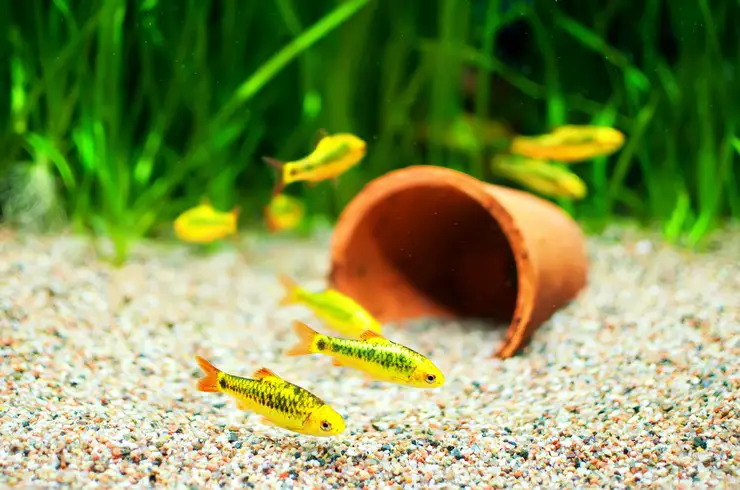
Most aquarists use tap water for changes, which cannot be guaranteed to be safe for fish. Chlorine compounds, heavy metals, and other impurities can easily destroy both the fish themselves and the beneficial microflora in the aquarium. To avoid problems with poor water quality, add Tetra AquaSafe Conditioner with every change. It instantly removes dangerous compounds from the water and enriches it with vitamins so that the fish feel as comfortable as possible. The consumption of the product is very small – 5 ml for every 10 liters of water.
Shine
Barbs thrive at any light level, so the choice of light sources depends on the plants the aquarist plans to plant in his underwater garden.
Priming
The most popular substrates are used as a substrate in aquariums with barbs – quartz sand, natural sea pebbles, specialized baked clay soils. It is best to stop at a fraction of 2-4 mm – the most optimal for the growth of living plants. If possible, it is better to choose a dark soil on which the barbs look more contrasting.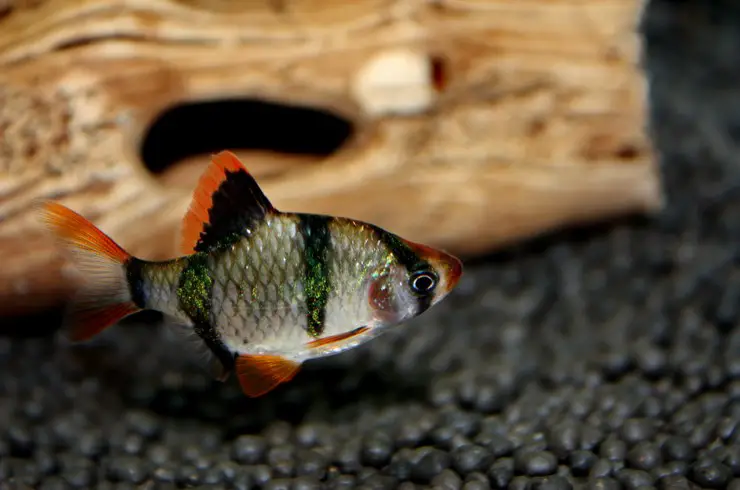
Plants
It is recommended to zone an aquarium for keeping barbs in several areas. The former are open spaces where fish will frolic, the latter are islands with dense thickets of plants – an excellent “natural” refuge for small fish, as well as a resting place. For decoration, you can choose any popular plant species: Cabomba, echinodorus, cryptocoryne, anubias, Vallisneria, etc.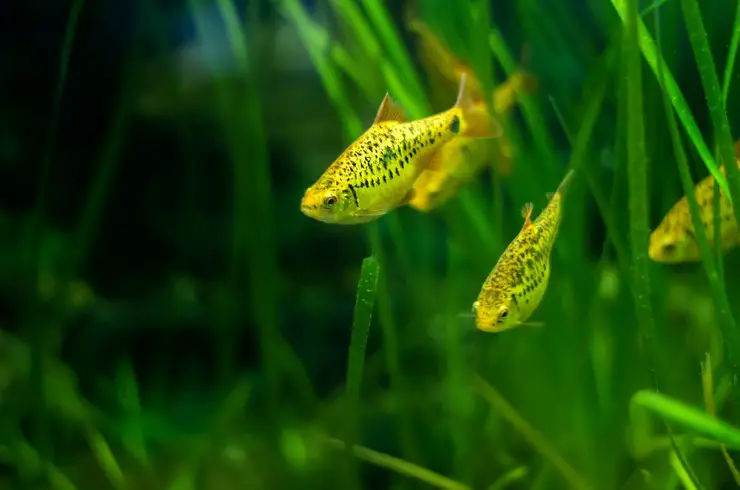
Compatibility
All types of barbs are relatively peaceful and can get along with the most popular tropical fish without any problems. However, it is important to remember that only in a flock do fish behave calmly, as they are busy playing with their relatives. Single barbs can be aggressive towards their aquarium neighbors.
Several flocks of different types of barbs look best in shared aquariums. All of them are absolutely compatible with each other, and small skirmishes, sometimes arising between males, do not develop into something serious. Moving medium-sized fish go well with barbs: zebrafish, swordtails, mollies, platies, iris, peaceful catfish.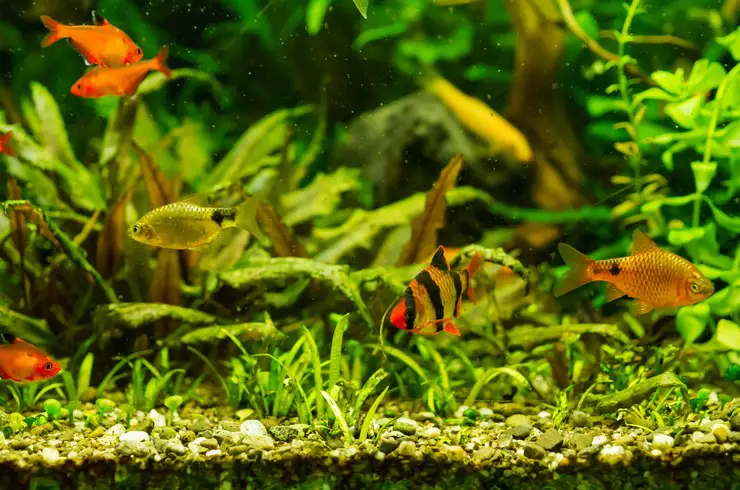
Some species of barbs, having reached adult size, get along well even with Malawian cichlids.
But who should not be planted with barbs are species that are distinguished by slowness and fish with veil fins. Goldfish, gourami, scalars may suffer if they are kept together. Barbs easily bite the tails and fins of these fish.
Life span
The lifespan of barbs in an aquarium is about 5 years.
